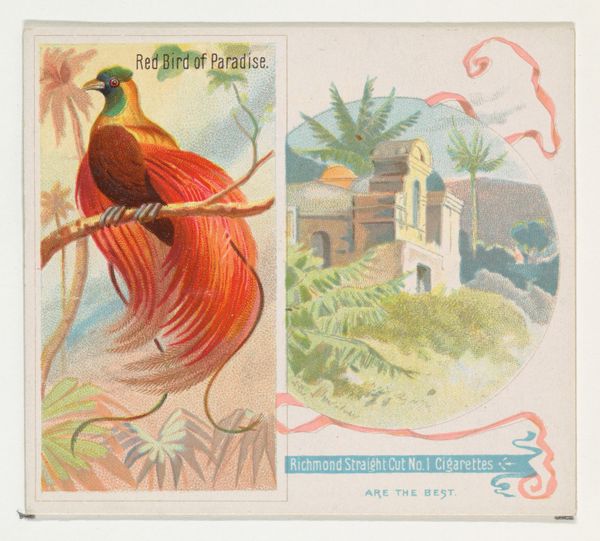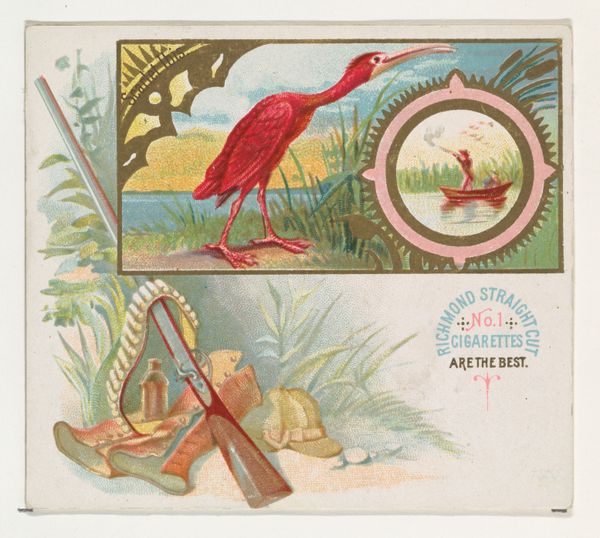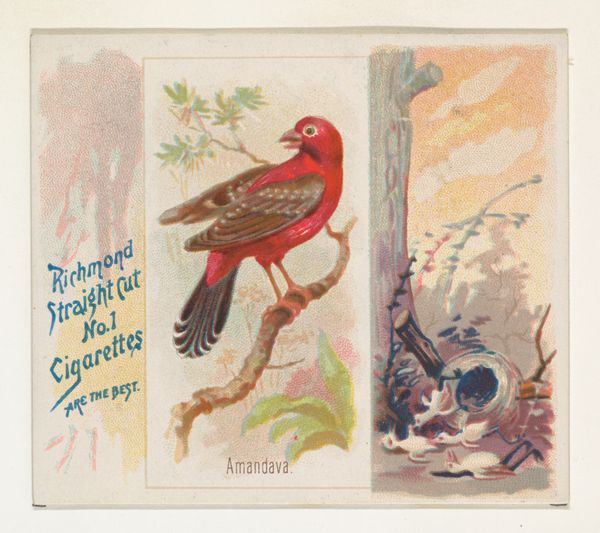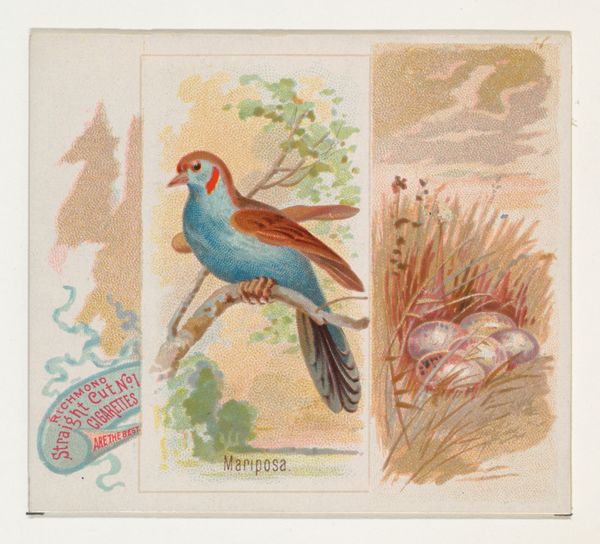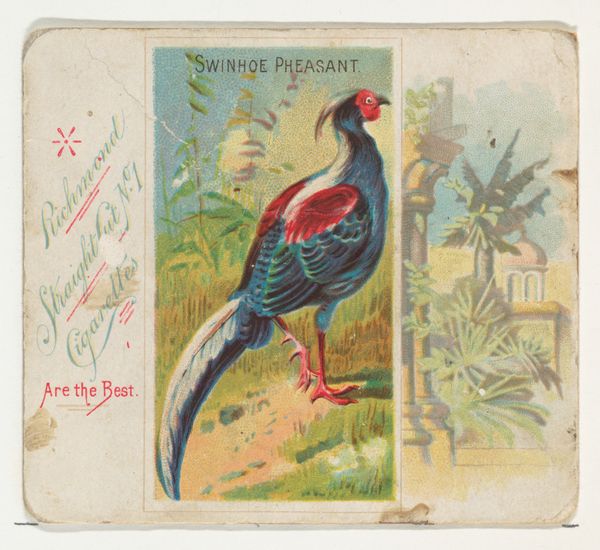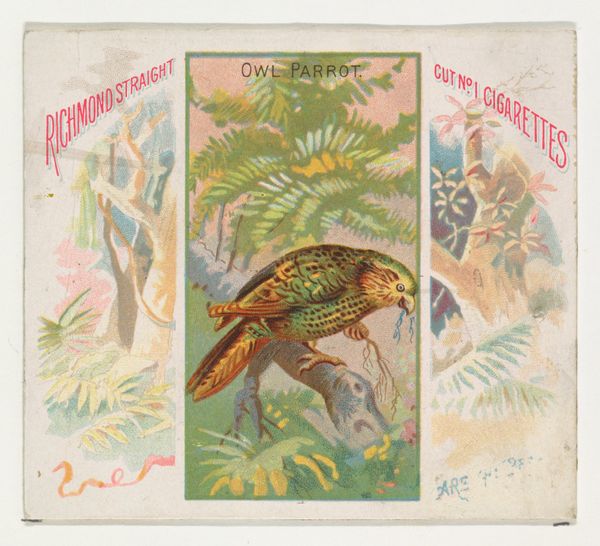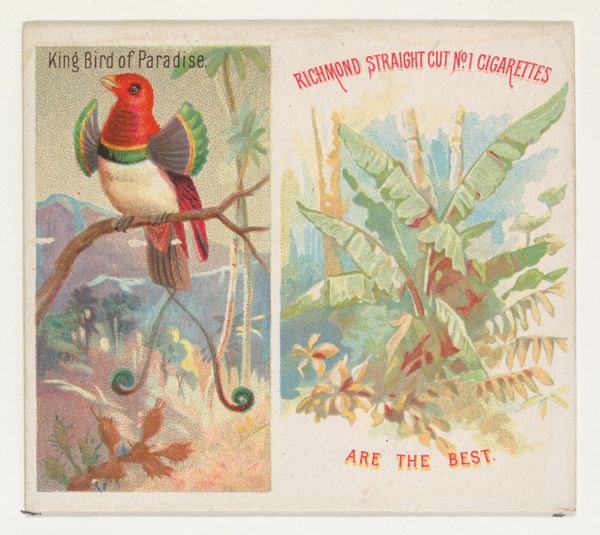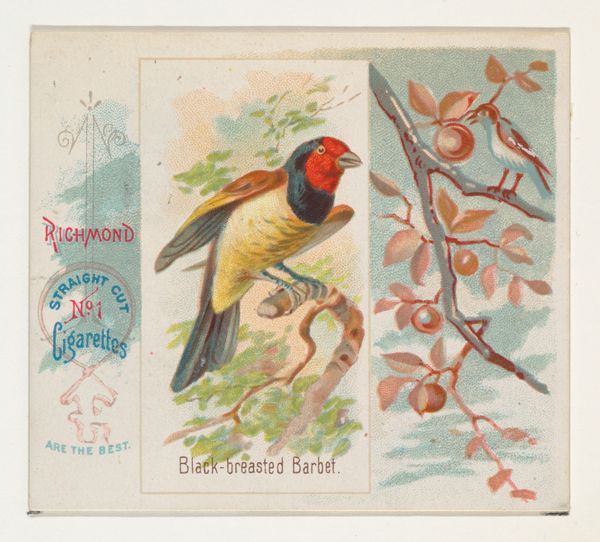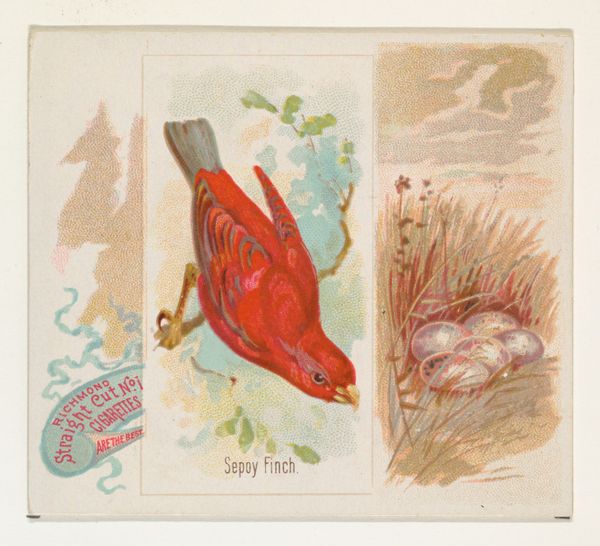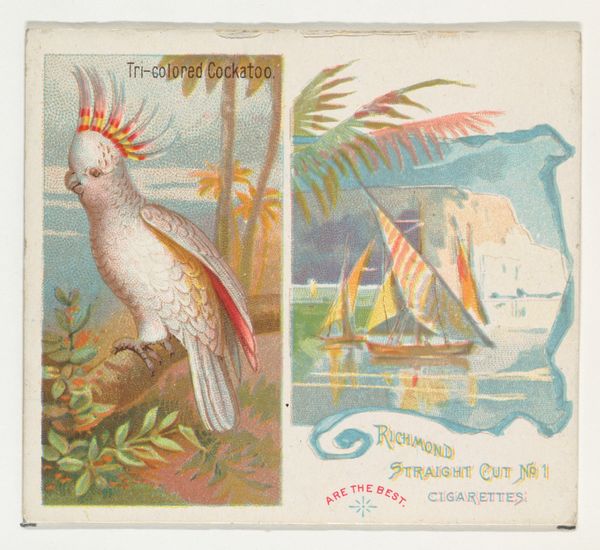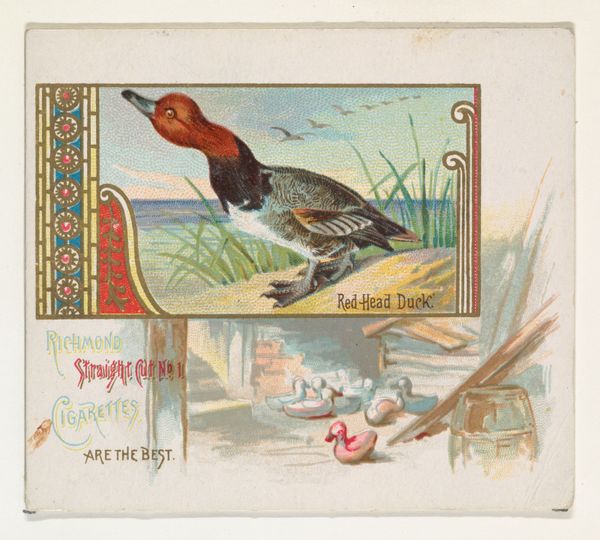
Jungle Fowl, from Birds of the Tropics series (N38) for Allen & Ginter Cigarettes 1889
0:00
0:00
#
water colours
# print
#
landscape
#
bird
#
coloured pencil
Dimensions: Sheet: 2 7/8 x 3 1/4 in. (7.3 x 8.3 cm)
Copyright: Public Domain
Curator: What immediately grabs me about this vibrant print titled "Jungle Fowl" from the Birds of the Tropics series is its exotic quality and those striking jewel-toned feathers of the fowl. Editor: It feels a bit melancholy despite the vibrant color. Perhaps it's the framing, how it's clearly meant as part of a set of collectables. Curator: Precisely! It was made in 1889, one of a series of collectible cards produced by Allen & Ginter for their cigarettes. We see Allen & Ginter adopting Japonisme trends here, appropriating motifs from Asian art that had been making their way into the Western market. The primary materials include color pencil, watercolour, and print. Editor: Interesting that it accompanied cigarette packs, which brings the issue of labour and production into the picture, literally! Were the factory workers, likely women, who assembled the cigarette packs exposed to the same visual culture, these supposed tropical idylls? The exoticism served as a distraction from the gritty realities of industrial labour. Curator: Definitely. There's a sharp contrast between the imagined idyll and the harsh conditions under which these items were made. The mode of production clashes with the depicted landscape. The lithographic process itself allowed for mass dissemination. Think of the paper-making processes, ink formulations, and the entire industrial apparatus required to circulate these images widely. Editor: And the function within a colonial context must be discussed. Cigarette cards like these didn't just offer a visual escape, they also subtly reinforced cultural hierarchies by romanticizing far-off lands. "Birds of the Tropics," as the series is called, suggests a kind of possessive observation, turning the natural world into a consumable spectacle. It normalizes an imperialist worldview. Curator: Agreed. The print served to familiarize consumers with imagery that may otherwise have remained unknown to them, feeding both curiosity and imperial desires. In doing so, we cannot deny how orientalism affected technique. Consider the emphasis on flat planes of colour, bold outlines and decorative patterning. It’s the material expression of a specific historical relationship between the West and Asia. Editor: Reflecting on "Jungle Fowl" makes me consider the ethics of visual consumption, reminding us how art intertwines with social and political power structures even within seemingly harmless imagery. Curator: Yes, and it underscores the importance of examining the artwork not only as an object of aesthetic beauty, but also as a material artifact deeply enmeshed within specific networks of production, consumption, and cultural exchange.
Comments
No comments
Be the first to comment and join the conversation on the ultimate creative platform.

